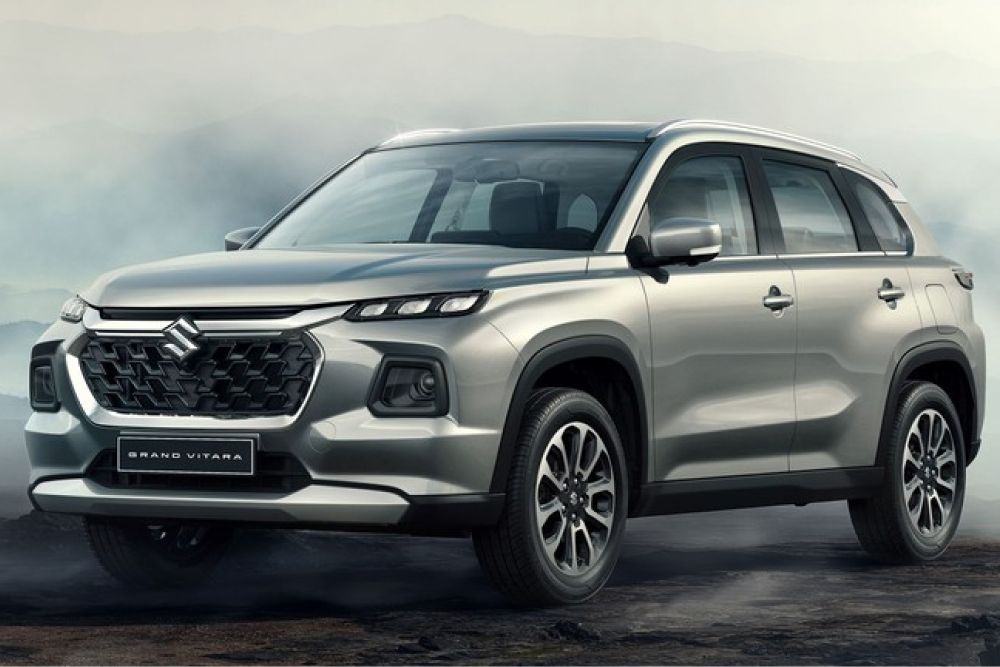Toyota Urban Cruiser Hyryder vs Maruti Suzuki Grand Vitara
Published On 22/4/2024, 10:37:26 am Author Nitesh YadavThe choice between two closely related siblings, the Grand Vitara and the HyRyder, might seem like a simple decision at first glance. However, a deeper dive into their differences reveals a different story, where branding, design, hybrid technology, and after-sales support play pivotal roles.

Despite minor variations in pricing, A few people believe that the badge on the hood and the quality of after-sales services can heavily influence the decision-making process. Some people are skeptical about owning Suzuki and feel pride in being a part of the Toyota family, while others happily go for the trust in maintenance and milage that Maruti has maintained for ages.
Comparing the design
 The Grand Vitara's front fascia embodies Suzuki's innovative approach to design, showcasing bold experimentation with rounded radiator grills. This design choice imbues the vehicle with a sense of quiet yet assertive presence.
The Grand Vitara's front fascia embodies Suzuki's innovative approach to design, showcasing bold experimentation with rounded radiator grills. This design choice imbues the vehicle with a sense of quiet yet assertive presence.

On the other hand, the HyRyder's front end seems reminiscent of the Tata Harrier, evoking a sense of emulation rather than originality. Even at the rear, while minor differences are present, Suzuki's inspiration from the Porsche Cayenne is subtly evident, although Toyota's taillight design appears more neatly integrated.
From the side profile, both vehicles share a striking resemblance, a testament to the platform strategy employed. However, despite these similarities, the changes in plastic cosmetics such as bumpers, headlights, grills, and taillights significantly alter the overall look, feel, and emotional appeal of each car.
Comparing the options available
Both the Grand Vitara and the HyRyder come equipped with the same 1.5-litre engine, yet their offerings diverge when it comes to trim levels and hybrid systems. The Grand Vitara boasts an impressive array of ten trim levels, while the HyRyder one-ups it with eleven. However, the standout discrepancy lies in their hybrid configurations.
The HyRyder shines with its robust hybrid powertrain, available across three trim levels, giving it a competitive edge over the Grand Vitara, which presents only two hybrid options. Notably, opting for the base model of the HyRyder allows customers to acquire a potent hybrid SUV for Rs. 2.38 lakh less than its Grand Vitara counterpart.
When comparing the top-tier models, the pricing aligns closely between the two SUVs, with the HyRyder offering a slight advantage by including a few additional comfort features. In the end, the choice between these vehicles hinges on individual preferences and budget constraints.
Fuel Efficiency
One of the most remarkable features of the strong hybrid is its ability to start in pure EV mode, providing a silent and environmentally friendly driving experience. With a range of up to 25 km on batteries alone, the strong hybrid enhances the overall fuel economy of the SUV, appealing to customers seeking an eco-conscious vehicle.
In evaluating the driving experience of the mild hybrid version, it's essential to understand its intended purpose. Unlike its stronger hybrid counterpart, the mild hybrid variant isn't engineered to deliver powerhouse performance. Instead, its power output is tuned to prioritize comfort, whether navigating city streets or cruising on the highway.
Efficiency takes center stage with the mild hybrid, offering practicality that shines in comparison to other fuel options within the segment. While the comfortable ride quality is appreciated, there's room for improvement, particularly concerning the tires.
Ultimately, while the mild hybrid version may not pack the same punch as its stronger counterpart, its focus on comfort and efficiency makes it a compelling choice for drivers seeking a practical and enjoyable driving experience in various conditions.
Features
The top-spec Grand Vitara impresses with features like Emergency Brake Light Flash, Hill Descent Control, Electronic Differential Lock, and the convenience of wireless Android Auto & Apple CarPlay. These advanced functionalities enhance safety and convenience, providing a comprehensive driving experience.
On the other hand, the HyRyder NeoDrive V may not offer the same advanced features as its counterpart, but it compensates with a range of standard amenities tailored to elevate comfort and convenience. These include Brake Assist, steering adjustment, a manual anti-glare IRVM, a leather-wrapped gear knob, ambient lighting, puddle lights, and a fully digital instrument panel. These features prioritize comfort and convenience, ensuring a pleasurable driving experience.
The strong-hybrid versions of both compact SUVs elevate the driving experience with a wealth of luxurious features that add a touch of sophistication to the ride. From wireless charging to ventilated front seats and a fully digital instrument cluster displaying vital vehicle information, these models leave no stone unturned in providing convenience and comfort to passengers.
One standout feature is the inclusion of a Head-Up Display (HUD), offering essential information right within the driver's line of sight. While this feature may come at a higher price point, its benefits in terms of safety and convenience are undeniable, enhancing the overall driving experience.
These premium amenities contribute to a more upscale feel, elevating the appeal of the SUVs to those seeking a luxurious ride. The attention to detail in these variants is commendable, and we believe that the additional cost is justified by the added functionality and convenience they bring to the table.
















